

Fox Valley homeowners face unique challenges when protecting their properties from severe weather conditions that can wreak havoc on residential structures. Wind damage roof incidents occur frequently throughout Wisconsin, where seasonal storms and high winds test even the most well-constructed homes. Understanding how wind affects your roof and implementing preventive measures can save thousands in repair costs while protecting your family's safety and comfort.
The vulnerability of roofing systems to wind damage stems from complex aerodynamic forces that create uplift pressure on roof surfaces. Strong winds generate negative pressure above the roof while creating positive pressure underneath, essentially trying to lift the entire structure. This phenomenon explains why roof damage occurs even when winds seem manageable from ground level. Professional assessment and proactive maintenance significantly reduce the risk of severe roof damage during storm events.
The vulnerability of roofing systems to wind damage stems from complex aerodynamic forces that create uplift pressure on roof surfaces. Strong winds generate negative pressure above the roof while creating positive pressure underneath, essentially trying to lift the entire structure. This phenomenon explains why roof damage occurs even when winds seem manageable from ground level. Professional assessment and proactive maintenance significantly reduce the risk of severe roof damage during storm events.
Understanding Wind Damage Roof Vulnerabilities

Wind damage manifests in various forms depending on wind speeds, roof age, and installation quality. Missing shingles represent the most visible sign of wind damage, often occurring when uplift forces exceed the holding power of roofing nails or adhesive strips. Once initial shingles lift, adjacent materials become increasingly vulnerable to further damage as wind gains access underneath the protective barrier.
Roof edges and corners experience the highest wind pressures, making these areas particularly susceptible to damage during storms. The roof deck becomes exposed when shingles fail, allowing water penetration that can lead to structural damage and mold growth. Understanding these vulnerability patterns helps homeowners focus protective efforts on high-risk areas.
Age significantly affects a roof's ability to withstand wind speeds. Older asphalt shingles lose flexibility and adhesion over time, making them more likely to crack or curl during wind events. Metal roofs generally offer superior wind resistance compared to other roofing materials, but proper installation remains crucial for maintaining this advantage.
Damaged shingles from previous storms create weak points that compromise the entire roof system. Even minor damage can escalate quickly when exposed to high winds, transforming small repair needs into major replacement projects. Regular maintenance addresses these issues before they become costly problems.
Quick tip: Wind speeds as low as 45 mph can begin lifting loose shingles, while winds over 75 mph can cause structural damage to properly installed roofing materials. Regular inspections help identify vulnerable areas before severe weather strikes.
Roof edges and corners experience the highest wind pressures, making these areas particularly susceptible to damage during storms. The roof deck becomes exposed when shingles fail, allowing water penetration that can lead to structural damage and mold growth. Understanding these vulnerability patterns helps homeowners focus protective efforts on high-risk areas.
Age significantly affects a roof's ability to withstand wind speeds. Older asphalt shingles lose flexibility and adhesion over time, making them more likely to crack or curl during wind events. Metal roofs generally offer superior wind resistance compared to other roofing materials, but proper installation remains crucial for maintaining this advantage.
Damaged shingles from previous storms create weak points that compromise the entire roof system. Even minor damage can escalate quickly when exposed to high winds, transforming small repair needs into major replacement projects. Regular maintenance addresses these issues before they become costly problems.
Quick tip: Wind speeds as low as 45 mph can begin lifting loose shingles, while winds over 75 mph can cause structural damage to properly installed roofing materials. Regular inspections help identify vulnerable areas before severe weather strikes.
Insurance Company Requirements and Coverage
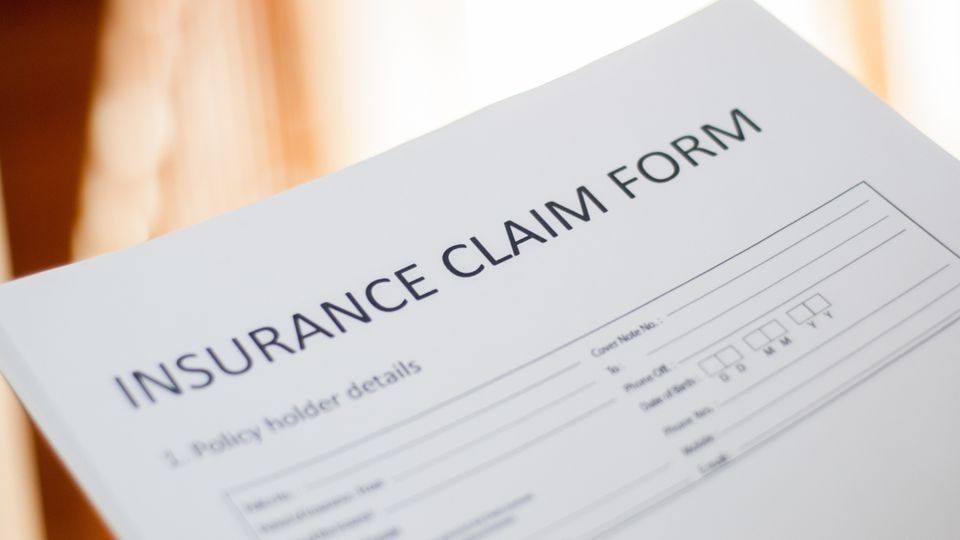
Insurance companies evaluate wind damage claims based on specific criteria that homeowners should understand before filing claims. Most insurance providers require documentation of damage severity and professional assessment to process roof damage insurance claims effectively. Standard homeowners insurance policies typically cover wind damage, but coverage details vary significantly between providers and policy types.
Your insurance policy covers wind damage differently than other perils, with some policies including separate wind deductibles or exclusions. Understanding these distinctions helps homeowners make informed decisions about coverage levels and claim timing. Insurance coverage for roof damage often depends on the roof's age, with older roofs facing depreciation adjustments that reduce claim payouts.
Successful insurance claims require thorough documentation including photographs, professional estimates, and detailed damage descriptions. Insurance adjusters assess claims based on industry standards and policy terms, making professional roofing contractor involvement valuable for claim success. The insurance adjuster evaluates damage extent and determines coverage amounts based on policy provisions.
Did you know? Filing multiple small claims can affect future premium rates and coverage availability. Consider repair costs versus deductible amounts before filing minor damage claims.
Your insurance policy covers wind damage differently than other perils, with some policies including separate wind deductibles or exclusions. Understanding these distinctions helps homeowners make informed decisions about coverage levels and claim timing. Insurance coverage for roof damage often depends on the roof's age, with older roofs facing depreciation adjustments that reduce claim payouts.
Successful insurance claims require thorough documentation including photographs, professional estimates, and detailed damage descriptions. Insurance adjusters assess claims based on industry standards and policy terms, making professional roofing contractor involvement valuable for claim success. The insurance adjuster evaluates damage extent and determines coverage amounts based on policy provisions.
Did you know? Filing multiple small claims can affect future premium rates and coverage availability. Consider repair costs versus deductible amounts before filing minor damage claims.
Recognizing Signs of Wind Damage
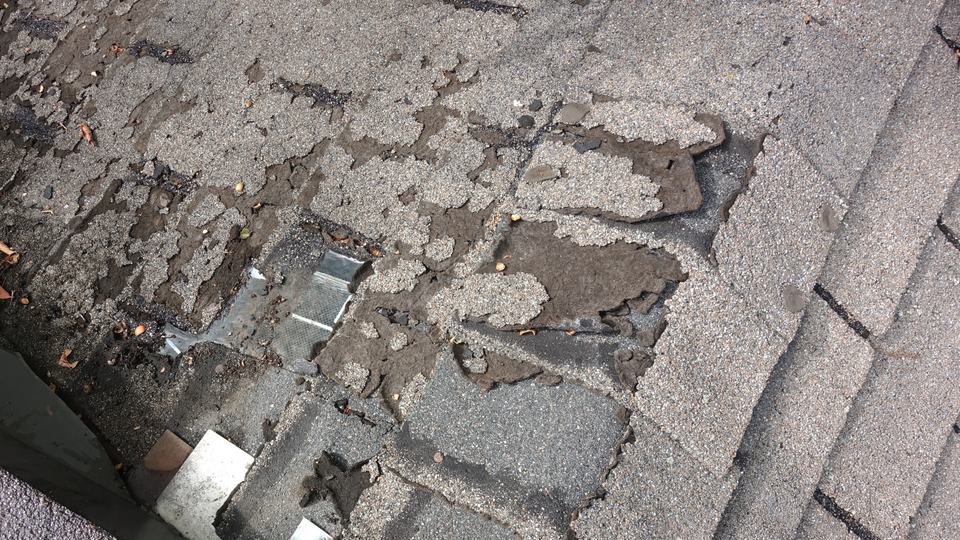
Signs of wind damage extend beyond obvious missing shingles to include subtle indicators that suggest roof vulnerability. Curling shingles indicate aging materials or installation issues that compromise wind resistance. These damaged shingles create entry points for wind uplift and water penetration that can cause extensive secondary damage.
Loose shingles may not be immediately visible from ground level but become apparent during professional inspections. Granule loss from asphalt shingles accelerates after wind events, leaving underlying materials exposed to weather elements. Cracked shingles develop from thermal cycling and wind stress, creating pathways for water leaks that damage interior spaces.
Roof vents and flashing around penetrations often sustain damage during wind events. Flying debris can dislodge or damage these components, creating immediate leak risks. Clogged gutters indicate possible shingle granule loss or debris accumulation from roof damage. These signs require prompt attention to prevent further damage to your roof's structure.
Peeling paint around roof edges or fascia boards suggests water infiltration from damaged roofing materials. Interior water stains or leaks following wind events indicate significant damage requiring immediate professional evaluation. Storm damage assessment should include both exterior and interior inspections to identify all affected areas.
Loose shingles may not be immediately visible from ground level but become apparent during professional inspections. Granule loss from asphalt shingles accelerates after wind events, leaving underlying materials exposed to weather elements. Cracked shingles develop from thermal cycling and wind stress, creating pathways for water leaks that damage interior spaces.
Roof vents and flashing around penetrations often sustain damage during wind events. Flying debris can dislodge or damage these components, creating immediate leak risks. Clogged gutters indicate possible shingle granule loss or debris accumulation from roof damage. These signs require prompt attention to prevent further damage to your roof's structure.
Peeling paint around roof edges or fascia boards suggests water infiltration from damaged roofing materials. Interior water stains or leaks following wind events indicate significant damage requiring immediate professional evaluation. Storm damage assessment should include both exterior and interior inspections to identify all affected areas.
High Winds and Structural Considerations
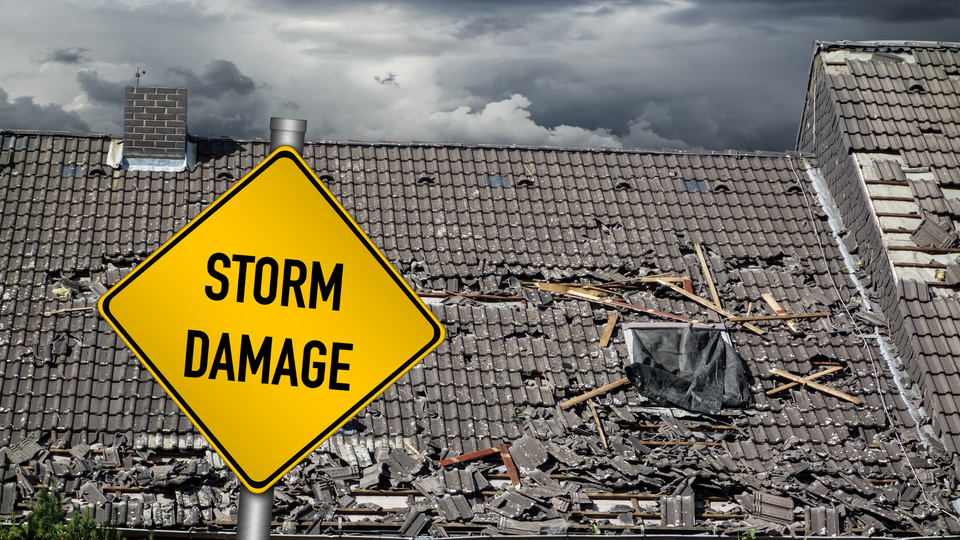
High winds create complex loading patterns that stress roofing systems beyond normal design parameters. Wind speeds increase dramatically with height, making upper roof areas more vulnerable than lower sections. The roof's integrity depends on proper connection between all components, from shingles to underlying structure.
Structural damage from high winds can affect roof decking, trusses, and connection points between roof and walls. These failures often require extensive repairs involving multiple building systems. Strong winds can lift entire roof sections when uplift forces exceed structural capacity, particularly in older homes with outdated connection methods.
Modern building codes address wind resistance through improved fastening requirements and material specifications. Homes built before current code standards may lack adequate wind resistance features. Retrofitting older roofs with enhanced fastening and wind resistant shingles improves performance during severe weather events.
Understanding your roof's wind rating helps establish realistic expectations for storm performance. Professional roofing contractors can assess current wind resistance and recommend upgrades that improve protection levels. These improvements often qualify for insurance discounts while providing peace of mind during storm seasons.
Damage to your roof requires systematic evaluation to identify all affected areas and prioritize repairs. Professional assessment ensures comprehensive damage documentation needed for insurance claims and repair planning. Reputable roofing contractors use standardized inspection procedures that meet insurance company requirements.
Post-storm inspections should occur as soon as safely possible to prevent further damage from weather exposure. Temporary protective measures may be necessary while arranging permanent repairs. Damage extent determines whether roof repair or roof replacement provides the most cost-effective solution.
Photograph documentation supports insurance claims and repair planning by providing visual evidence of damage extent and patterns. Multiple angles and close-up shots of specific damage areas create comprehensive records. This documentation proves valuable when working with insurance adjusters and contractors.
Structural damage from high winds can affect roof decking, trusses, and connection points between roof and walls. These failures often require extensive repairs involving multiple building systems. Strong winds can lift entire roof sections when uplift forces exceed structural capacity, particularly in older homes with outdated connection methods.
Modern building codes address wind resistance through improved fastening requirements and material specifications. Homes built before current code standards may lack adequate wind resistance features. Retrofitting older roofs with enhanced fastening and wind resistant shingles improves performance during severe weather events.
Understanding your roof's wind rating helps establish realistic expectations for storm performance. Professional roofing contractors can assess current wind resistance and recommend upgrades that improve protection levels. These improvements often qualify for insurance discounts while providing peace of mind during storm seasons.
Damage to Your Roof Assessment Strategies
Damage to your roof requires systematic evaluation to identify all affected areas and prioritize repairs. Professional assessment ensures comprehensive damage documentation needed for insurance claims and repair planning. Reputable roofing contractors use standardized inspection procedures that meet insurance company requirements.Post-storm inspections should occur as soon as safely possible to prevent further damage from weather exposure. Temporary protective measures may be necessary while arranging permanent repairs. Damage extent determines whether roof repair or roof replacement provides the most cost-effective solution.
Photograph documentation supports insurance claims and repair planning by providing visual evidence of damage extent and patterns. Multiple angles and close-up shots of specific damage areas create comprehensive records. This documentation proves valuable when working with insurance adjusters and contractors.
Hail Damage and Combined Weather Events
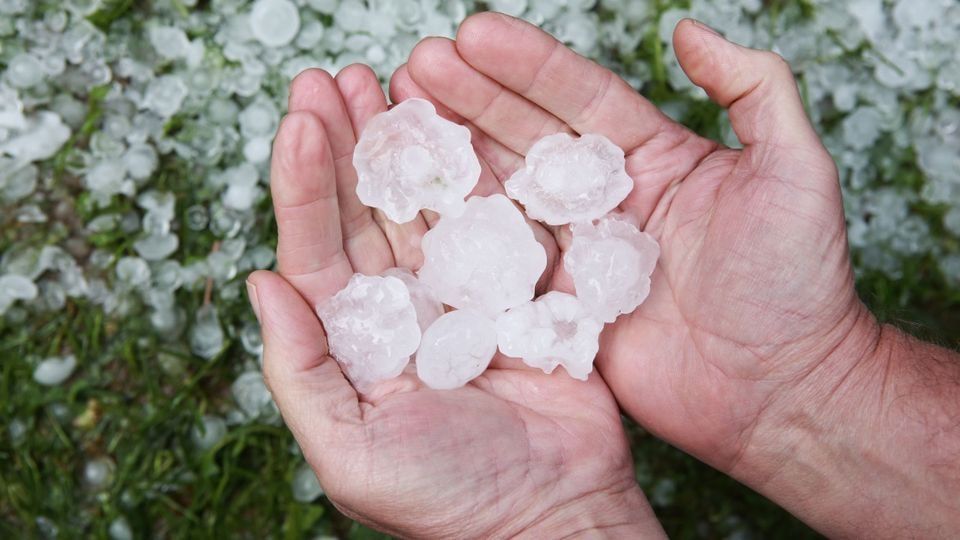
Hail damage often accompanies wind events, creating compound damage that requires comprehensive repair approaches. Hail storms can weaken roofing materials immediately before or after wind exposure, increasing overall damage severity. The combination of hail impact and wind uplift creates unique failure patterns that affect repair strategies.
Insurance policies may treat hail and wind damage differently, affecting claim processing and coverage amounts. Understanding these distinctions helps homeowners navigate claims processes more effectively. Some regions experience frequent combined hail and wind events that require specialized roofing materials and installation techniques.
Severe storms often produce both hail and high winds simultaneously, creating widespread damage patterns across entire neighborhoods. This concentrated damage can strain contractor availability and material supplies, making prompt action important for timely repairs. Emergency repairs may be necessary to prevent water damage while awaiting permanent solutions.
Insurance policies may treat hail and wind damage differently, affecting claim processing and coverage amounts. Understanding these distinctions helps homeowners navigate claims processes more effectively. Some regions experience frequent combined hail and wind events that require specialized roofing materials and installation techniques.
Severe storms often produce both hail and high winds simultaneously, creating widespread damage patterns across entire neighborhoods. This concentrated damage can strain contractor availability and material supplies, making prompt action important for timely repairs. Emergency repairs may be necessary to prevent water damage while awaiting permanent solutions.
Homeowners Insurance Policy Considerations

Homeowners insurance policies vary significantly in wind damage coverage, deductibles, and claim procedures. Standard homeowners insurance policies include wind coverage, but policy limits and exclusions affect actual protection levels. Understanding policy language helps homeowners make informed decisions about coverage adequacy.
Your homeowners insurance policy may include separate wind deductibles that differ from other coverage deductibles. These provisions significantly affect out-of-pocket costs for wind damage claims. Annual policy reviews ensure coverage remains adequate for current property values and local risk levels.
Insurance policy covers wind damage restoration costs minus applicable deductibles and depreciation adjustments. Replacement cost coverage provides better protection than actual cash value policies for older roofs. Policy endorsements may be available to enhance wind coverage or reduce deductibles for qualified properties.
Working with insurance providers requires understanding claim procedures and documentation requirements. Prompt notification and professional documentation improve claim processing efficiency. Some insurance companies offer preferred contractor programs that streamline repair processes while ensuring quality standards.
Insurance coverage optimization involves balancing premium costs with adequate protection levels for local wind risks. Higher deductibles reduce premium costs but increase out-of-pocket expenses during claims. Coverage limits should reflect current replacement costs including material and labor inflation.
Wind resistant improvements often qualify for insurance discounts that offset upgrade costs over time. These discounts vary by insurance provider and improvement type. Impact-resistant shingles, enhanced roof deck attachment, and secondary water barriers provide measurable risk reduction that insurers recognize through premium reductions.
Annual policy reviews with insurance agents ensure coverage remains current with property improvements and local risk changes. Market conditions affect coverage availability and pricing, making regular evaluation important for maintaining optimal protection. Documentation of roof improvements supports discount applications and claim processes.
Your homeowners insurance policy may include separate wind deductibles that differ from other coverage deductibles. These provisions significantly affect out-of-pocket costs for wind damage claims. Annual policy reviews ensure coverage remains adequate for current property values and local risk levels.
Insurance policy covers wind damage restoration costs minus applicable deductibles and depreciation adjustments. Replacement cost coverage provides better protection than actual cash value policies for older roofs. Policy endorsements may be available to enhance wind coverage or reduce deductibles for qualified properties.
Working with insurance providers requires understanding claim procedures and documentation requirements. Prompt notification and professional documentation improve claim processing efficiency. Some insurance companies offer preferred contractor programs that streamline repair processes while ensuring quality standards.
Insurance Coverage Optimization Strategies
Insurance coverage optimization involves balancing premium costs with adequate protection levels for local wind risks. Higher deductibles reduce premium costs but increase out-of-pocket expenses during claims. Coverage limits should reflect current replacement costs including material and labor inflation.Wind resistant improvements often qualify for insurance discounts that offset upgrade costs over time. These discounts vary by insurance provider and improvement type. Impact-resistant shingles, enhanced roof deck attachment, and secondary water barriers provide measurable risk reduction that insurers recognize through premium reductions.
Annual policy reviews with insurance agents ensure coverage remains current with property improvements and local risk changes. Market conditions affect coverage availability and pricing, making regular evaluation important for maintaining optimal protection. Documentation of roof improvements supports discount applications and claim processes.
Curling Shingles and Material Deterioration
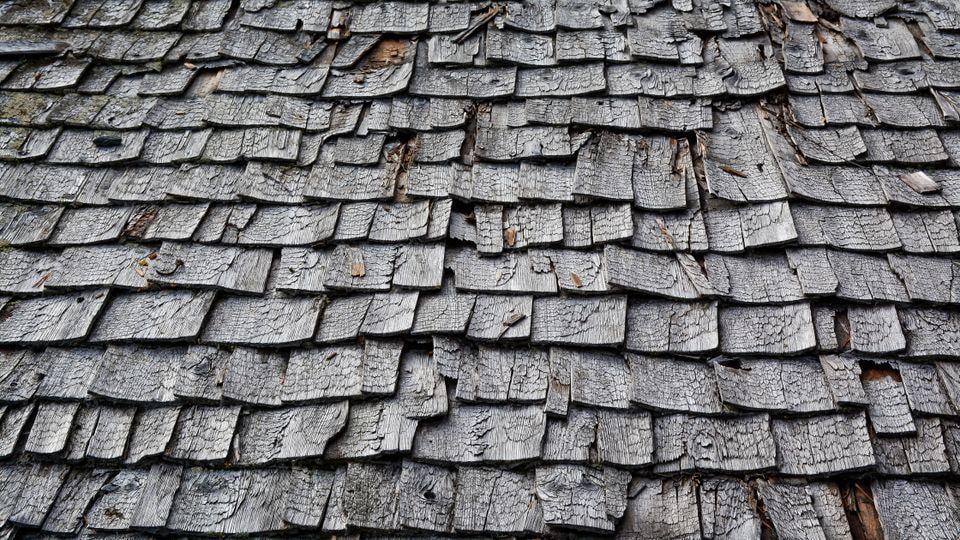
Curling shingles indicate advanced material deterioration that compromises wind resistance significantly. This condition develops gradually through thermal cycling and UV exposure, making regular inspection important for early detection. Curled edges create wind entry points that accelerate damage during storm events.
Asphalt shingle deterioration follows predictable patterns that experienced contractors recognize during inspections. Granule loss, thermal splitting, and edge curling indicate replacement needs before complete failure occurs. Addressing deterioration proactively prevents emergency repairs during severe weather periods.
Material quality affects deterioration rates and wind resistance throughout the roof's service life. Premium shingles typically offer better wind ratings and longer warranties than standard products. Investment in quality materials provides superior storm protection and reduces long-term maintenance costs.
Environmental factors including sun exposure, temperature extremes, and moisture levels affect material deterioration rates. South-facing roof sections typically show more advanced deterioration than north-facing areas. Understanding these patterns helps prioritize maintenance and replacement scheduling.
Asphalt shingle deterioration follows predictable patterns that experienced contractors recognize during inspections. Granule loss, thermal splitting, and edge curling indicate replacement needs before complete failure occurs. Addressing deterioration proactively prevents emergency repairs during severe weather periods.
Material quality affects deterioration rates and wind resistance throughout the roof's service life. Premium shingles typically offer better wind ratings and longer warranties than standard products. Investment in quality materials provides superior storm protection and reduces long-term maintenance costs.
Environmental factors including sun exposure, temperature extremes, and moisture levels affect material deterioration rates. South-facing roof sections typically show more advanced deterioration than north-facing areas. Understanding these patterns helps prioritize maintenance and replacement scheduling.
Damaged Roof Repair and Replacement Decisions
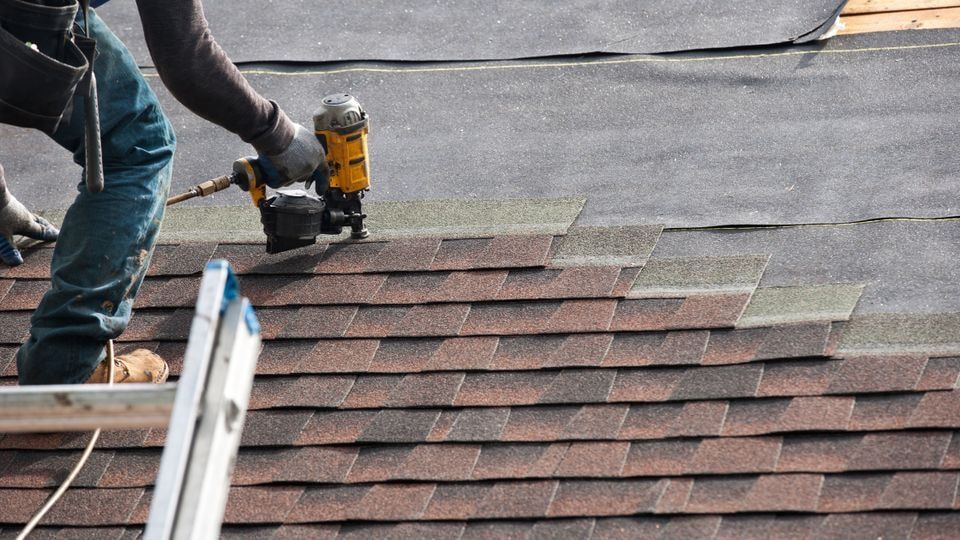
Damaged roof evaluation determines whether repair or replacement provides the most effective solution. Extensive damage affecting large roof areas typically requires replacement for optimal performance and warranty coverage. Localized damage may be repairable if surrounding materials remain in good condition.
Age considerations affect repair versus replacement decisions significantly. Roofs approaching the end of their expected service life benefit from replacement rather than extensive repairs. Mixing old and new materials can create performance inconsistencies and warranty complications.
Cost analysis should include both immediate expenses and long-term performance expectations. Repeated repairs on aging roofs often exceed replacement costs while providing inferior protection. Professional evaluation helps homeowners make informed decisions based on actual conditions rather than assumptions.
Insurance claim timing affects available options for repair versus replacement. Claim settlements may favor replacement when damage exceeds certain thresholds. Working with experienced contractors ensures repair estimates accurately reflect necessary work scope and quality standards.
Insurance cover claims require systematic documentation and professional support for optimal outcomes. Claim success depends on demonstrating damage causation, extent, and repair necessity through acceptable evidence. Professional roofing contractors experienced in insurance work provide valuable claim support.
Repair estimates should reflect industry standards for materials and installation methods. Detailed estimates help insurance adjusters understand work scope and pricing rationale. Multiple estimates may be required for larger claims or when initial assessments differ significantly.
Claim processing timelines vary based on damage extent, documentation quality, and insurance company procedures. Prompt claim filing and complete documentation accelerate processing while reducing the risk of coverage disputes. Understanding claim procedures helps homeowners navigate the process more effectively.
For comprehensive guidance on identifying roof problems, explore our detailed resource on roof leak identification and repair which covers detection methods and repair strategies.
Age considerations affect repair versus replacement decisions significantly. Roofs approaching the end of their expected service life benefit from replacement rather than extensive repairs. Mixing old and new materials can create performance inconsistencies and warranty complications.
Cost analysis should include both immediate expenses and long-term performance expectations. Repeated repairs on aging roofs often exceed replacement costs while providing inferior protection. Professional evaluation helps homeowners make informed decisions based on actual conditions rather than assumptions.
Insurance claim timing affects available options for repair versus replacement. Claim settlements may favor replacement when damage exceeds certain thresholds. Working with experienced contractors ensures repair estimates accurately reflect necessary work scope and quality standards.
Insurance Cover Claim Processing
Insurance cover claims require systematic documentation and professional support for optimal outcomes. Claim success depends on demonstrating damage causation, extent, and repair necessity through acceptable evidence. Professional roofing contractors experienced in insurance work provide valuable claim support.Repair estimates should reflect industry standards for materials and installation methods. Detailed estimates help insurance adjusters understand work scope and pricing rationale. Multiple estimates may be required for larger claims or when initial assessments differ significantly.
Claim processing timelines vary based on damage extent, documentation quality, and insurance company procedures. Prompt claim filing and complete documentation accelerate processing while reducing the risk of coverage disputes. Understanding claim procedures helps homeowners navigate the process more effectively.
For comprehensive guidance on identifying roof problems, explore our detailed resource on roof leak identification and repair which covers detection methods and repair strategies.
Preventive Measures and Roof Maintenance
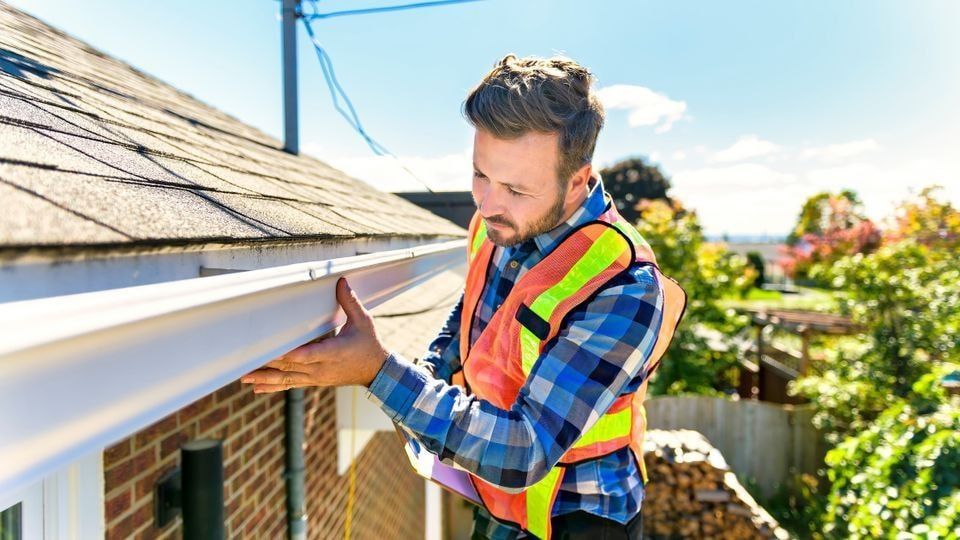
Regular maintenance significantly reduces wind damage risk while extending roof service life. Annual inspections identify developing problems before they compromise wind resistance. Professional maintenance includes fastener checks, sealant renewal, and debris removal that maintains optimal performance.
Proper drainage prevents water accumulation that weakens roofing materials and promotes deterioration. Maintaining gutters and downspouts ensures water flows away from roof edges where wind damage often begins. Tree trimming reduces flying debris risks while preventing branch contact that damages roofing materials.
Understanding roof anatomy and components helps homeowners identify maintenance needs and communicate effectively with contractors. Knowledge of roof systems enables better decision-making about repairs and improvements.
According to the National Storm Damage Center, proper roof maintenance can reduce wind damage by up to 40% compared to neglected roofs. This significant risk reduction justifies regular investment in professional maintenance services.
Proper drainage prevents water accumulation that weakens roofing materials and promotes deterioration. Maintaining gutters and downspouts ensures water flows away from roof edges where wind damage often begins. Tree trimming reduces flying debris risks while preventing branch contact that damages roofing materials.
Understanding roof anatomy and components helps homeowners identify maintenance needs and communicate effectively with contractors. Knowledge of roof systems enables better decision-making about repairs and improvements.
According to the National Storm Damage Center, proper roof maintenance can reduce wind damage by up to 40% compared to neglected roofs. This significant risk reduction justifies regular investment in professional maintenance services.
Frequently Asked Questions
How do I file a wind damage roof insurance claim?
Contact your insurance company immediately after discovering storm damage to report the claim and schedule an adjuster visit. Document all damage to your roof with photographs and obtain professional repair estimates. Keep records of temporary repairs and expenses while awaiting claim resolution.
What wind speeds cause roof damage?
Strong wind speeds above 45 mph can begin lifting loose or damaged shingles, while winds over 75 mph can damage properly installed materials. Sustained winds pose greater risk than brief gusts. Your roof's age and condition significantly affect its wind resistance capabilities.
Does homeowners insurance cover wind damage?
Most standard homeowners insurance policies cover roof damage, but coverage details vary by policy and provider. Some policies include separate wind deductibles or exclusions. Review your policy terms and discuss coverage with your insurance agent for specific details.
How can I prevent roof wind damage?
Regular professional inspections identify and address vulnerabilities before storms strike. Proper maintenance including fastener checks, sealant renewal, and debris removal maintains wind resistance. Consider upgrading to wind resistant roof shingles during roof replacement projects.
When should I replace my roof after wind damage?
Replacement becomes necessary when damage affects large roof areas or when repair costs approach replacement costs. Age considerations favor replacement for roofs near the end of their expected service life. Professional evaluation helps determine the most cost-effective solution.
Comprehensive Roof Protection Strategy
Protecting your home's roof from wind damage requires understanding vulnerability factors, maintaining proper insurance coverage, and implementing preventive maintenance strategies. Professional guidance ensures optimal protection while minimizing roof repair costs and insurance complications throughout your roof's service life.
